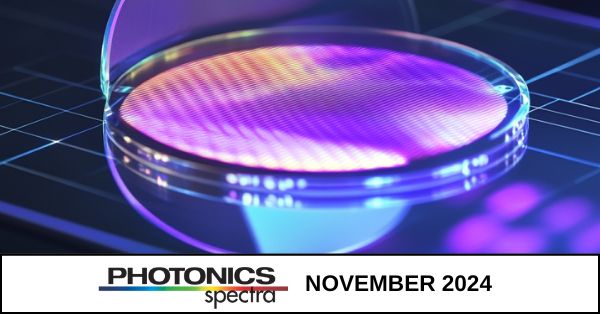Aug. 29, 2024

Planar Optics
Fourth generation (4G) optics, as distinguished by diffractive waveplates, are defined and explored in this article, as a contrast to emergent meta-optics technology. The fabrication and performance advantages enjoyed by planar optics offer a direct solution to the limitations faced by metasurfaces. This article describes 4G optics fabrication using liquid crystals, including liquid crystal polymer films; the optimization and customization of diffraction efficiency; spectrally-selective lenses; and reflective geometrical phase optics. As a result of the evolution of 4G optics technology, The "holy grail" of optics – an optic as clear and efficient as glass, shaped into lenses and prisms, but not as thick and heavy, and overcoming efficiency and bandwidth limitations of diffractive optics and metasurfaces – is within sight.
Key Technologies: Planar optics, optical prisms, flat optics, diffractive waveplates, polarizers, LCDs, spatial light modulators, liquid crystals, Bragg mirrors, Bragg gratings, reflective optics, phase shifters
Terahertz Sources and Applications
The evolution of terahertz sources, to the contemporary pulsed and continuous wave THz sources of today, is examined, with a focus on integrated sources and the range of sophisticated applications for, and supported by THz radiation. Spotlighted applications include ToF measurements for coating analysis (in the automotive sector;) packaging quality control (in pharmaceuticals); security control; and THz spectral analysis of chemicals and surface inspection (in semiconductor manufacturing) using THz imaging technologies. More than holding the key to nondestructive measurement and testing, specialized source designs and sophisticated application make THz radiation a vital tool at all reaches of the value chain in numerous industrial sectors.
Key Technologies: THz sources, nondestructive testing and analysis, THz TD spectroscopy, THz imaging, ToF measurement, THz detectors, coatings analysis (metallic and dielectric), surface analysis
Camera Design
As deep learning capabilities integrate into a range of technology areas, engineers and designers must determine how-best to harness the potential of AI/DL for their systems, starting in the design and fabrication stages. Camera designers, as well as vision system integrators, must develop imagers and imaging systems capable of achieving optimal performance without compromising or restricting the AI/DL element. At the same time, cameras must support the AI element: Deep learning applications cannot achieve peak levels of functionality in poor lighting settings, or as part of a sub-optimally designed system, and require high-quality images for training and labeling via a data set. The considerations that camera designers and end-users give to system design in the budding AI age is explored. Considered questions include how designers are adapting camera designs to incorporate or pair with an AI/DL element; the relationship between AI/DL capabilities in image processing and the design of a camera; and the trade-off between the quality of camera optics and the sophistication of the AI element.
Key Technologies: 3D imaging, cameras, machine vision systems, camera optics, AI/DL, camera sensors
Laser Diodes
Recent advances in high power diode laser architectures are described. These designs incorporate features such as monolithically fabricated diffraction gratings, optical mode selection elements, and tapered optical amplifiers to provide greatly improved spatial and spectral brightness. The resulting performance improvements allow direct diodes to address, at much lower cost, size and power consumption, applications that conventionally have required solid-state or fiber lasers, or that could not be addressed altogether. Supported applications range from those in electrical power generation, magnetic resonance imaging, and dermatology, to greenhouse gas sensing, laser surgery, and satellite communications.
Key Technologies: Motion control, Ultrafast laser materials processing, Laser micromachining, Positioning equipment, Laser scanners, Linear motors, Software
Laser Safety: Cleanroom Safety
The highly specialized cleanroom environment is spotlighted, with special consideration for laser users and operators. Cleanroom environments place stringent requirements on occupants, and careful, precise directions for the use of laser systems is paramount to ensure safety as well as to maintain necessary conditions. Laser system access, preventative measures, access control, training, protective equipment, and a clearly stated standard operating procedure are among the tools that laser safety officers -- and cleanroom users -- have available to ensure safe usage and optimal conditions.
Key Technologies: lasers, laser safety
Download Media Planner